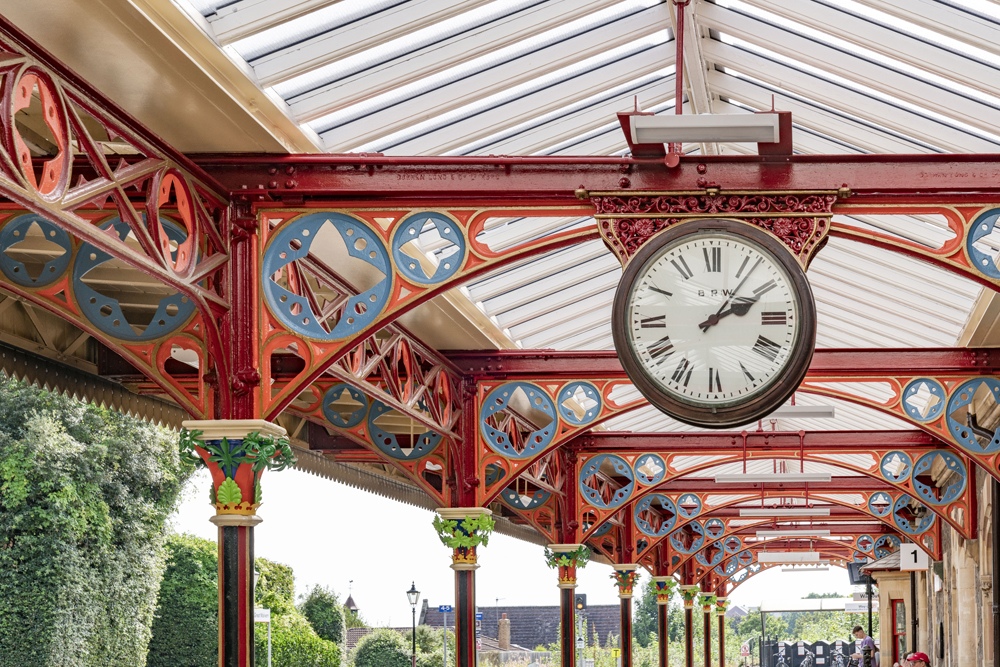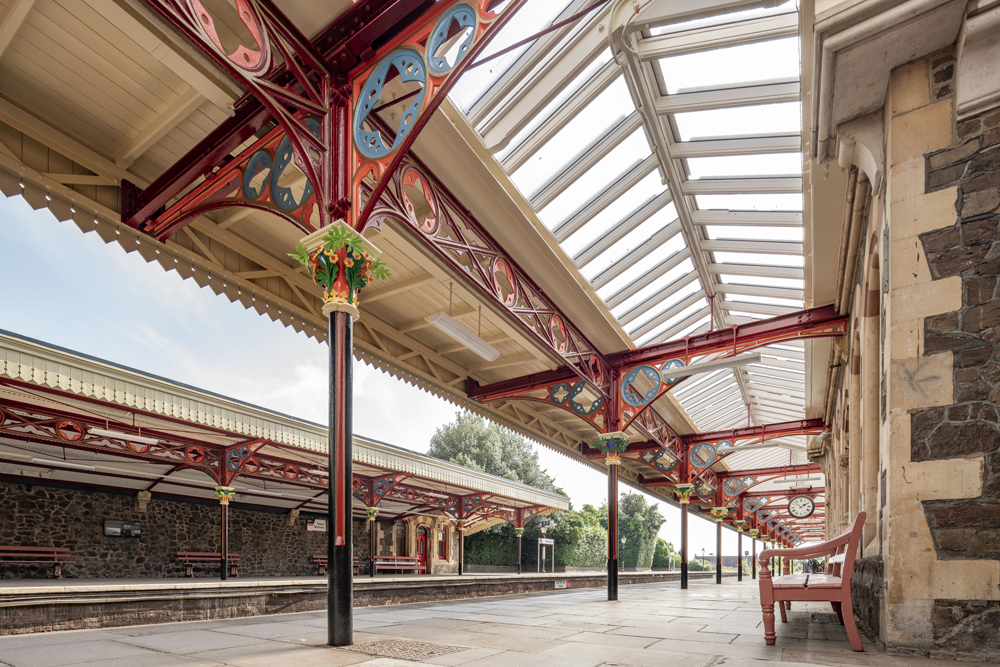For some, the train is merely a form of public transport allowing them to commute into the cities or move around the country. Almost 1.5 billion passenger journeys were recorded last year in the period up to September 2023. For many, travelling by train is seen as a journey back in time, conjuring romantic scenes of the Victorian era when there was something of a “Railway Mania” around. During the Victoria era £3 billion was spent on the railways resulting in over 1.1 billion passengers travelling up and down the country on 16,000 miles of track.
The railway system was built primarily to move goods around, but it also offered people opportunities for travel and adventure, holidays, and developing business; this all fuelled the growth of towns and cities. The railway erased the distances between towns, the countryside, and the coast. Fresh produce could be delivered within hours, easily, to different parts of the country. As trains and times became standardised, timetables were published and displayed allowing people to plan journeys and in turn the railways aided communication as an enabler of the spread of ideas and national newspapers.
However, you may view the railways, either as an essential form of transportation or as a nostalgic reminder of days long past, there is no denying that the train is one of the greenest and lowest-carbon forms of transportation we have. The railway only contributed 1.4% towards total UK transport emissions last year. The railway also offers a rare and unique trip through time. Regardless of your reason for travelling, you will undoubtedly pass through both modern and historic places of interest along your journey. The railway has a vast array of infrastructure spanning hundreds of years of development and while there is little of the early wooden wagonways from the 1560s there are plenty of relics from the nineteenth century showcasing nearly 200 years of important heritage.
A piece of historical and important rail infrastructure is Great Malvern Station. Originally opened in 1860 as part of the Worcester and Hereford Railway it is a unique piece of Victorian architecture. Rated as one of the most attractive stations in the country, it draws tourists and visitors throughout the year. Great Malvern Station became a grade II listed building in 1969 due to its cast iron girders and stunning sculptured floral arrangements again in cast iron. It had, unfortunately suffered the ravages of time in its 162 years of service so a plan to refurbish the station and platforms was put into action in April 2022.
Created by British Rail in 1985, the Railway Heritage Trust (RHT) was set up as an independent company, to assist the operational railway in its preservation and upkeep of listed buildings and structures. Network Rail and National Highways (Historic Railways Estate) now sponsor the work of the Trust since privatisation of the railways.
It fell to the RHT to help support Network Rail to ensure the refurbishment at Great Malvern Station was carried out to the highest standards while maintaining an operational station for passengers. The £4 million scheme was completed at Christmas 2023 and has breathed new life into the Victorian station. Apart from the refurbishment of the ornate iron work and the bright colours and gilding used to pick out the detail in the floral patterns, the most obvious and striking part of the refurbishment is the platform roofs which flood the platforms below with natural light. Due to modern building regulations and an increase in health & safety since the Victorian era, simply replacing the old glazing with new panes wasn’t possible or practical. There was a need to update the building materials without losing any of that period charm.


Twinfix, the Warrington based pioneers of polycarbonate and the recognised experts in the industry, were approached to help solve this problem. Having already brought new life and importantly light into old stations as part of refurbishment work, Twinfix recommended their Multi-Link-Panel Non-Fragile system glazed with polycarbonate to keep the overall aesthetics of the station but add a much-needed resilience to the canopies.
Twinfix, utilise aluminium structural bars that are glazed with lightweight, yet tough, solid polycarbonate. The aluminium can be powder coated to a range of colours for a rust and maintenance-free life. As panels are pre-assembled in a controlled factory environment possible contamination and errors in installation caused by on-site cutting of the glazing sheet are avoided.
Handling during installation is easier and safer than with traditional glass systems as panels are constructed from materials that are both strong and light weight. The reduction in weight compared with glass systems has the added benefit of lowering the overall weight of the roof construction, decreasing the stresses on the existing fabric of a building, especially important where a refurbishment is being undertaken.
Twinfix, as British manufacturers are in an ideal position to help with designing out potential problems. Each roofing system is unique and bespoke, so Twinfix used their deep understanding of the product and the legislation covering such projects to ensure the system they designed and installed was as close to the Victorian aesthetics as possible. However, the system still had to comply with modern legislation such as CDM (Construction Design and Management Regulations), something our Victorian counterparts didn’t need to worry about.
Tim Hedley-Jones, Executive Director of the Railway Heritage Trust said: “We are very pleased to have supported Network Rail in their recent restoration work at Great Malvern Station. It is an artistic and architectural masterpiece of Victorian railway engineering.”
Vicky Evans, Director at Twinfix said; “Twinfix were pleased to be part of the restoration at Great Malvern station which looks spectacular. The work of the expert restoration team may largely go unnoticed as people pass by on their way to a new adventure, but when you know a bit about the past stories of how the railway came about, you might just spot a new piece of history as you travel by train and go back to the future.”
CREDIT: Photographs taken by Paul Childs, Spheroview



